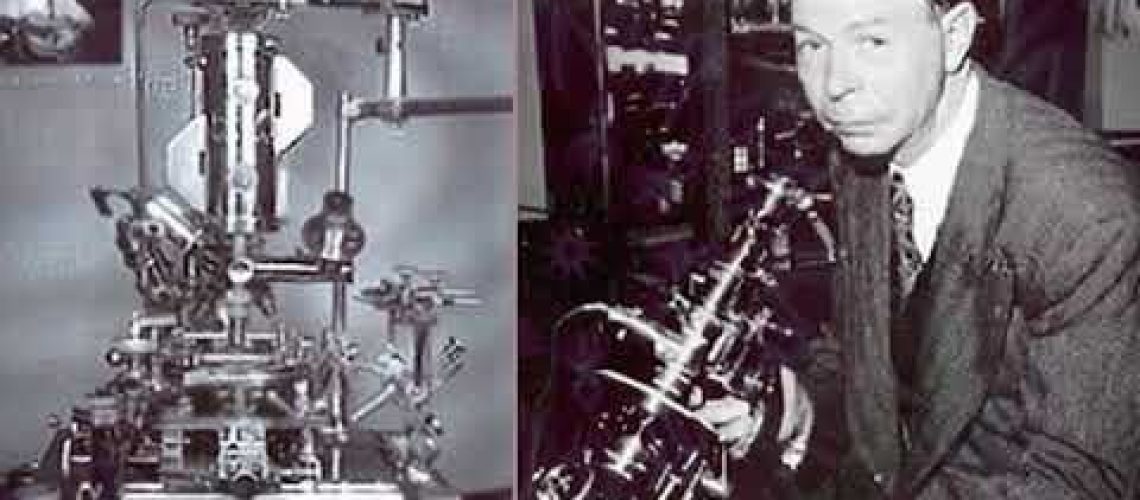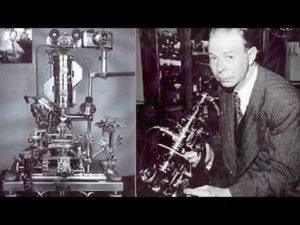Let’s take a quick look at some of the early pioneers of modern radionics.
Radionics is a wide field of interest that exists at an intersect between the physiological and the metaphysical. Over the last century radionics has broadened to include all manner of subtle energetic manipulations, especially as they pertain to the body and mind. What follows is a brief history of radionics through the pioneers of the field.
Dr. Albert Abrams
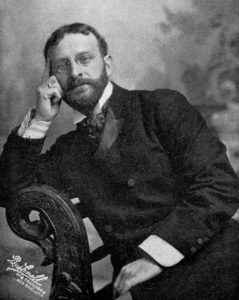
The father of modern Radionics is one Albert Abrams. Abrams was born in 1863 in San Francisco, California. He would go on to earn his medical degree from Heidelberg University in Germany nineteen years later in 1882. After returning to his home he assumed a position as a Professor of Pathology at Cooper Medical College, which would later be integrated into Stanford University.
Abrams would go on to develop his theory of Radionics, primarily, in two books that he published in 1909, 1910, and a paper in 1916. Over the years Abrams would create several devices that would seek to diagnose and treat various illnesses. The first of these machines was the Dynomizer, similar to a radio in appearance, the device would be used by Abrams and his students to diagnose diseases through dried blood samples or samples of handwriting.
Abrams work relied on a rather simple assumption that issues with the human body could be detected through the electromagnetic fields that are emitted by the body. Furthermore, Abrams postulated that the electron, and by extension electromagnetic waves were the basis of all existence. Abrams developed his devices to aid him in detecting these unique magnetic fields. He codified these a priori theses into the Electronic Reactions of Abrams or ERA, with the usual humility of many scientists and inventors of the time.
The ability to detect these fields in people is known as Radiesthesia and is a skill that can be developed by some. Abrams’ devices allowed for Radiesthesia to be enhanced for those that used his devices much as a telescope would allow for the viewing of distant objects. The samples of blood or handwriting would carry the “frequencies” of their owner. Here frequency is understood to be a unique property, separate from the more widely understood definition of the term.
The Dynomizer was a success for Abrams and he would charge for students to learn Spondylotherapy (based upon Chiropractic and Osteopathic practices) as well as ERA. Abrams would lease copies of his Dynomizer to his students, who numbered roughly 3,500 by 1921 according to Abrams.
Abrams would continue to tinker and attempt to expand his work beyond the Dynomizer. He would develop the Oscilloclast as well as the Radioclast. The latter of which was accompanied by a manual of frequencies that Abrams had determined to be best to attack specific diseases once a patient was diagnosed with them by Abrams other devices. These are but two examples of the thirteen-odd devices that Abrams produced for those that followed his work.
While Abrams would expand his practice into the 1920’s his work met with criticism stemming from the spiraling list of diseases that he claimed his devices could cure. His devices also tended to return serious diagnoses with combinations of cancer, diabetes, syphilis, and “bovine syphilis”. Critics of his work would go so far as to launch investigations into Abrams student’s practices. The American Medical Association sent one student a sample of guinea pig blood and another a sample of rooster blood. Both returned wildly inaccurate results.
In another attempt to discredit Abrams Scientific American worked with a man going by the pseudonym “Doctor X” used one of Abrams devices to attempt to deduce the contents of six vials containing unknown pathogens. “Doctor X” allowed the journalists to observe his procedure and twice the doctor was unable to use the device to correctly identify any of the pathogens in the vials.
Eventually the debate over the efficacy of Abrams devices rose to the level were several of Abrams students found themselves facing changes of fraud. Abrams would be dragged into one of these proceedings. However, before he could stand as a witness, he would pass of pneumonia at the age of 60 in 1924.
Abrams was not alone in his research into the field of Radionics others would make their own contributions. Electrical engineer Thomas Galen Hieronymus, 1895-1988, would develop his own series of machines from vacuum tube RF amplifiers and copper bifilar coils. The copper coils would be integrated into a touch plate that would allow the operator to detect a “stick” or a “tingle” as the correct frequency was found.
These stick plates would be found on many other Radionic devices as other researchers experimented and developed other machines to detect and interact with the energies.
Thomas Galen Hieronymus
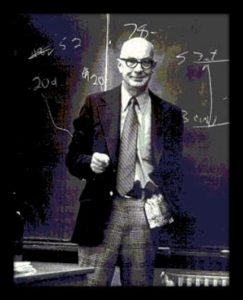
Hieronymus based his work on a theory like that of Abrams. That all matter emits radiation that has properties of both light and electricity. Hieronymus also used his machines to manipulate these energies that he identified as Eloptic Emanations.
Of Hieronymus’ machines the most well known one was the Eloptic Medical Analyzer that Hieronymus designed to analyze and send Eloptic Energy with the goal of identifying illness and treating it in both plants and animals.
Hieronymus’ work would continue into the 1940’s with him receiving a patent in 1949 for one of his devices in the U.S. He would attract interest from many including John W. Campbell the editor of Astounding Science Fiction. Campbell noted that that he found Hieronymus’ devices to be able to do more than just healing. Campbell however would be spurned by Hieronymus in the inventor’s autobiography with Hieronymus railing against Campbell’s use of Hieronymus’ devices for delving into supernatural or “magical” aspects.
Wilhelm Reich
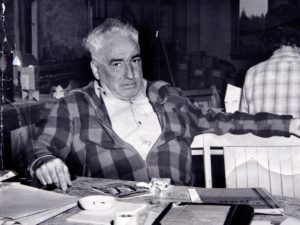
Another well-known name in the early field of Radionics was Wilhelm Reich who developed his own theory of subtle energy interaction known as Orgone. Reich was a psychoanalyst and student of Sigmund Freud. Reich independently developed his own Orgone theory and developed a massive number of devices to test his ideas. The most well-known being the various types of Orgone accumulators and the Cloudbuster, which was originally designed to help cause rain.
Reich was born in 1897 in what is now the Ukraine and he would eventually be forced to move to the U.S. due to his Jewish ancestry, his connections to Communist ideologies, and radical ideas about sexual liberation.
While Reich had a complicated life with many twists, turns, and controversies as he attempted to prove his ideas to the wider scientific community his lasting impact on the field of Radionics would be his ideas about Orgone and Orgone accumulation. Today many Radionics devices utilize some form of Orgone accumulators to enhance or augment their functions.
Royal Raymond Rife is an influential name in the field of Radionics, with his devices and discoveries remaining in use to this day. However, his life is one of the least well documented of the major names in the field.
Born in 1888 in Elkhorn, Nebraska, Royal Raymond Rife, to his parents Royal Raymond Rifle, Sr. and Ida May Chaney. With the poor documentation of his life, and much of his work only gaining interest until after his death much of his biographical information is debated and difficult to verify.
Noted as an inquisitive mind in his early years, it is attested he attended John Hopkins University and studied Bacteriology. Sources also note that he would also attend the University of Heidelberg, where he would receive an honorary doctorate.
Royal Rife would tinker and design various devices for his experiments. One of note was the creation of several optical compound microscopes. Which allowed him to observe and document, using movie cameras, to create time-lapse microscopies of various bacteria. Other microscopes of his design would include polarizers. His most impressive, “Universal”, microscope capable of a claimed total magnification 60,000 times. However, this is an inflated figure. Though unverified, his laboratories were said to be well equipped for the time with various surgery, pathology, and machining equipment.
However, his most noted work would come from his designing of, and experimentation with, his Rife Machine. Sometime between 1920 and 1930 Rife would begin his work with bacteria. By 1931 it is said that Rife had isolated what he called the “BX Cancer Virus.” Whatever Rife was working with, due to the limitations of optical microscopes, it is unlikely that he was observing what we would normally call a virus.
Using various frequencies of light Rife attacked the microbes and reported that he had successfully destroyed them. From this Rife developed his theory of a “Mortal Oscillatory Rate”. A frequency that he claimed could destroy specific bacteria without harming human tissue.
Rife would go on to attempt to legitimize his claims with the rest of the scientific community. However, he would be rejected and discredited by other researchers in the 1950’s. Despite this Rife continued to promote his work. In the 1950’s he would work to develop a new technology. Working with his engineering assistant, John Crane, Rife would develop a device to deliver resonance waves directly to the bodying using electrodes. Crane would go on to publish much of this work despite continued rejection by the wider scientific community.
Various conspiracy theories abound about why Rife was unsuccessful in gaining more widespread acceptance of his work. Ranging from bribes, lawsuits, and assassination. However, Rife’s work would remain largely unexamined until the 1980’s. Many of the conspiracy theories revolve around suppression of the cure for cancer. Rife himself believed that the American Medical Association was responsible for his status. He called those who rejected his work, “brainwashed and intimidated.“
Today there is promising research in the field of Oncology that suggests cancer cells may be hindered using electromagnetic fields. Despite this, these studies are very speculative and in need of further testing. No Radionics device has been proven to cure cancer or any other disease.
Following various reported legal troubles, stemming from his claims about his devices, Rife would pass at the age of 83 on August 5th, 1971.
Radionics Today
Today the field of Radionics continues to be moved forward by inventors and experimenters. Modern devices will incorporate at least a seed of the work of all of these pioneers in the field in an attempt to advance the field.

